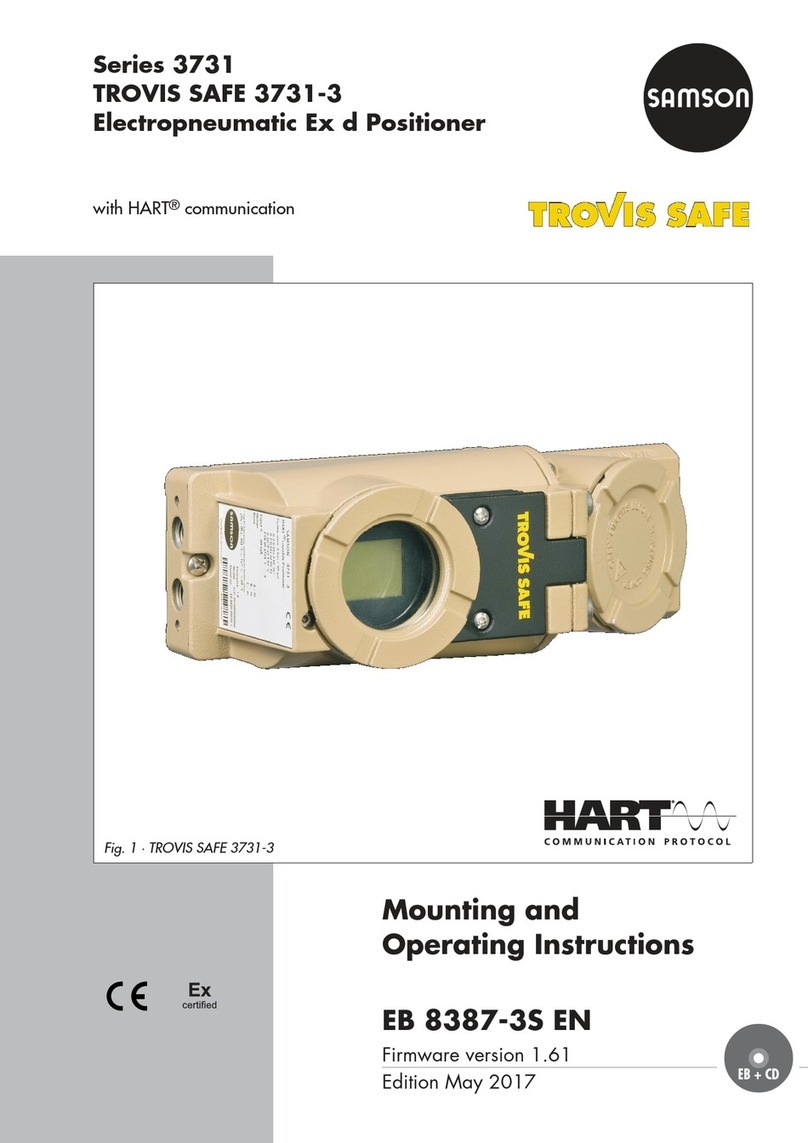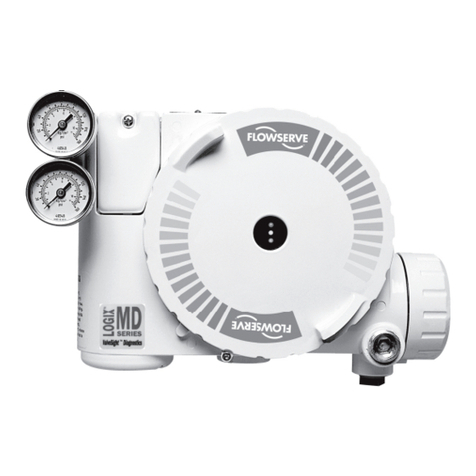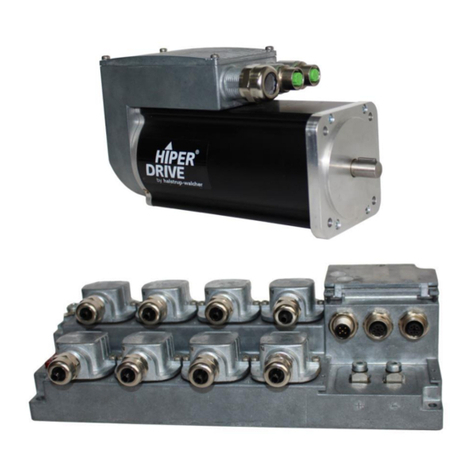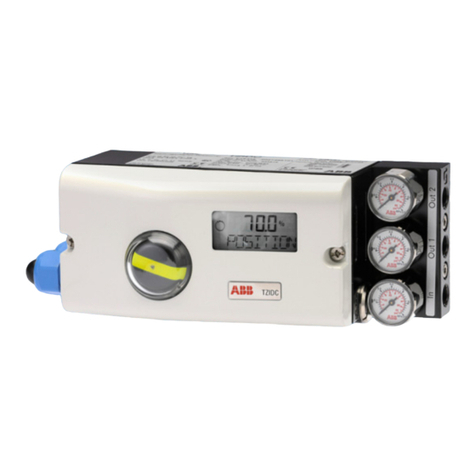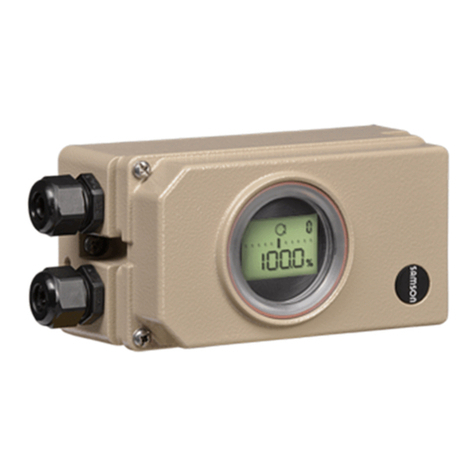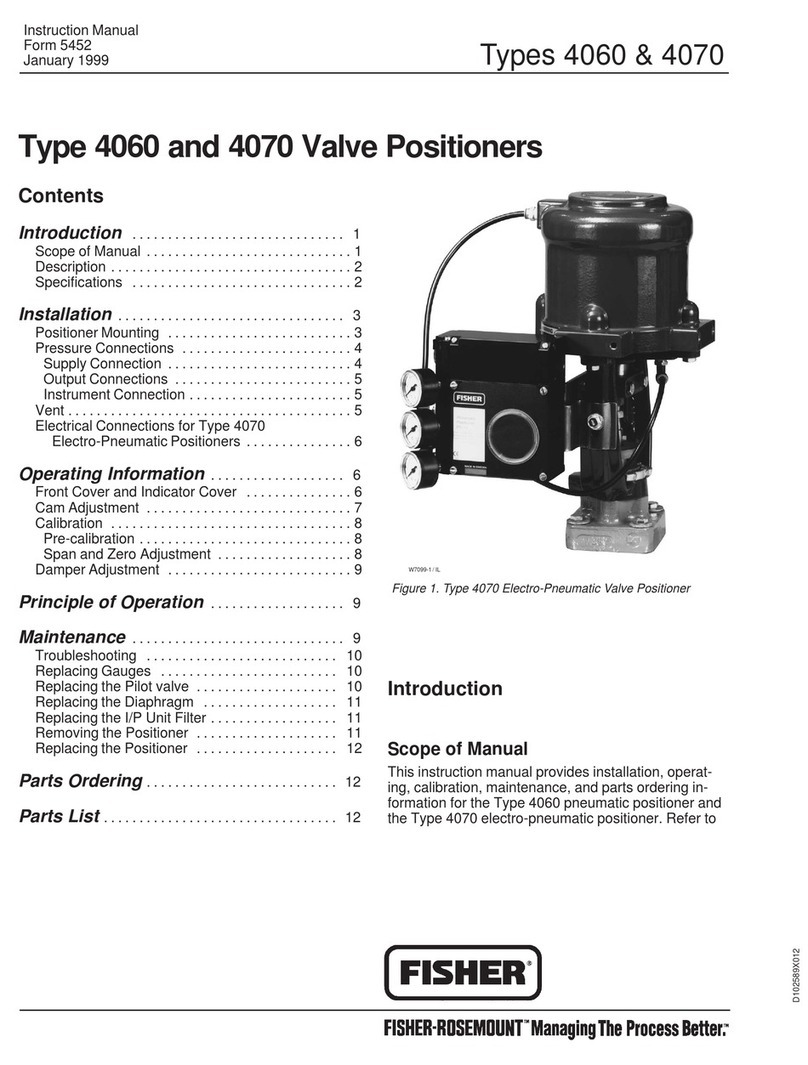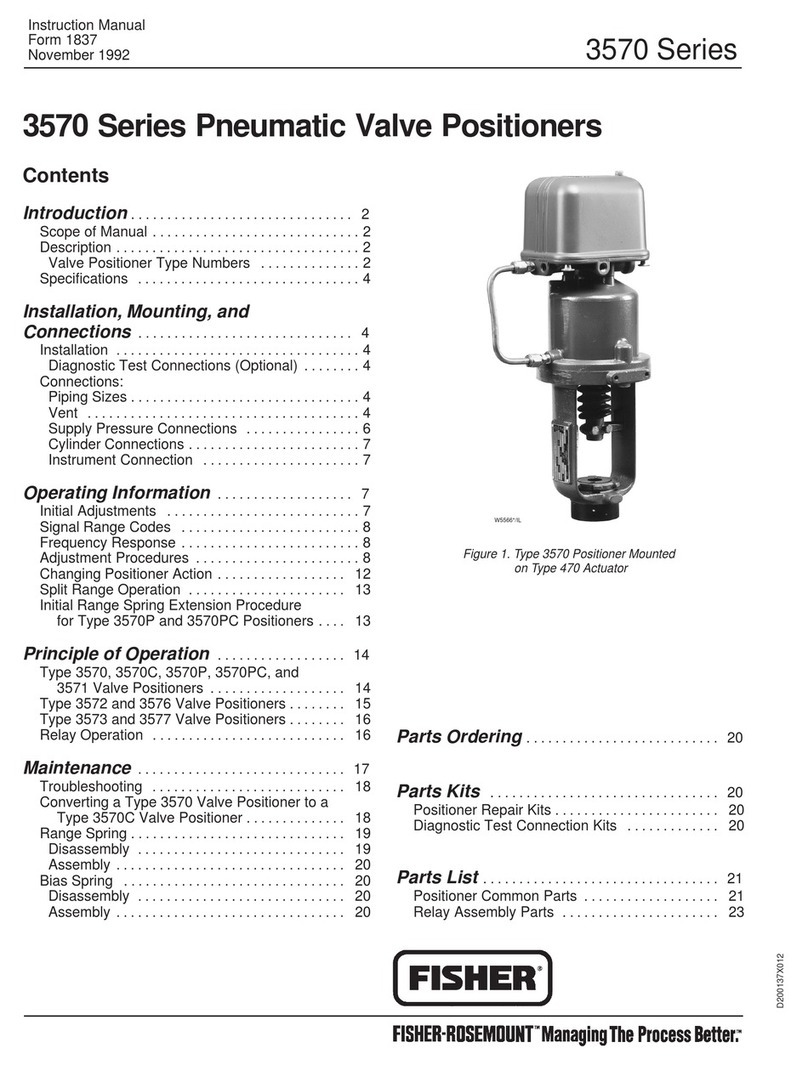
3582 and 3583 Series
2
Contents (cont’d)
Calibration Of Valve Positioner Or Valve
Stem Position Transmitter
17. . . . . . . . . . . . .
Beam Alignment 17. . . . . . . . . . . . . . . . . . . . . . . . . . .
Calibration 19. . . . . . . . . . . . . . . . . . . . . . . . . . . . . . . .
Principle of Operation
19. . . . . . . . . . . . . . . . . .
3582 Series Valve Positioners 19. . . . . . . . . . . . . . .
Type 3582i Valve Positioner 20. . . . . . . . . . . . . . . . .
3583 Series Valve Stem Position Transmitters 20.
Maintenance
21. . . . . . . . . . . . . . . . . . . . . . . . . . . . .
Changing the Range Spring 22. . . . . . . . . . . . . . . . .
Replacing Gaskets 22. . . . . . . . . . . . . . . . . . . . . . . . .
Replacing the Nozzle O-Ring 22. . . . . . . . . . . . . . . .
Removing and Replacing the Relay 23. . . . . . . . . . .
Relay Maintenance 23. . . . . . . . . . . . . . . . . . . . . . . . .
Adjusting the Flapper Pivot 24. . . . . . . . . . . . . . . . . .
Replacing the Type 582i Converter
Primary O-Ring and Filter 24. . . . . . . . . . . . . . . . .
Replacing the Type 582i Converter Housing
Cap O-Ring 24. . . . . . . . . . . . . . . . . . . . . . . . . . . . .
Removing the Type 582i Converter 24. . . . . . . . . . .
Reassembling the Type 582i Converter 25. . . . . . .
Parts Ordering
25. . . . . . . . . . . . . . . . . . . . . . . . . . .
Parts Kits
25. . . . . . . . . . . . . . . . . . . . . . . . . . . . . . . .
Parts List
25. . . . . . . . . . . . . . . . . . . . . . . . . . . . . . . . .
Introduction
Scope of Manual
This instruction manual includes installation, operation,
calibration, maintenance, and parts ordering informa-
tion for the 3582 Series pneumatic valve positioners,
the Type 3582i electro-pneumatic valve positioner,
and the 3583 Series pneumatic valve stem position
transmitters. Refer to separate instruction manuals for
information on the control valve, actuator, and acces-
sories.
Only personnel qualified through training or experience
should install, operate, or maintain the valve positioner
or valve stem position transmitter. If there are any
questions concerning the instructions in this manual,
contact your Fisher sales office or representative be-
fore proceeding.
Description
The 3582 Series pneumatic valve positioners and the
Type 3582i electro-pneumatic valve positioner shown
in figure 1 are used with diaphragm-actuated, sliding-
stem control valve assemblies. The pneumatic valve
positioners receive a pneumatic input signal from a
control device and modulate the supply pressure to
the control valve actuator. The positioner adjusts the
actuator supply pressure to maintain a valve stem
position proportional to the pneumatic input signal.
Type 3582NS positioners meet typical requirements of
the nuclear power industry. The Type 3582NS
construction includes materials that provide superior
performance at elevated temperature and radiation
levels. The O-rings are EPDM (ethylene propylene)
and the diaphragms are EPDM/Nomex. EPDM(1) dem-
onstrates superior temperature capability and shelf life
over nitrile. The Nomex diaphragm fabric demon-
strates improved strength retention at elevated tem-
perature and radiation conditions.
In addition, the Type 3582NS positioner is qualified
“commercial grade dedicated” under Fisher’s
10CFR50, Appendix B, quality assurance program.
These can be supplied as 10CFR21 items.
The Type 3582i is an electro-pneumatic valve position-
er, consisting of a Type 582i electro-pneumatic con-
verter installed on a Type 3582 pneumatic valve posi-
tioner. The Type 3582i valve positioner provides an
accurate valve stem position that is proportional to a
dc current input signal.
The Type 582i electro-pneumatic converter is a modu-
lar unit that can be installed at the factory or in the
field. However, do not plan to install a Type 582i con-
verter on an existing positioner until you contact your
Fisher sales office or representative for application
assistance.
The Type 582i converter receives the dc current input
signal and, through a nozzle/flapper arrangement, pro-
vides a proportional pneumatic output signal. This
pneumatic output signal provides the input signal to
the pneumatic valve positioner, eliminating the need
for a remote-mounted transducer.
The 3583 Series pneumatic valve stem position trans-
mitters are for use with sliding-stem diaphragm actua-
tors. These units provide an output signal that is di-
rectly proportional to the valve stem position.
Refer to the type number description for a detailed
explanation of type numbers.
Type Number Descriptions
The following descriptions provide specific information
on the different valve positioner or valve stem position
transmitter constructions. If the type number is not
known, refer to the nameplate on the positioner. For
the location of the nameplate, refer to key 25 in figure
21.
1. Use a clean, dry, oil-free air supply with instruments containing EPDM components.
EPDM is subject to degradation when exposed to petroleum-based lubricants.







